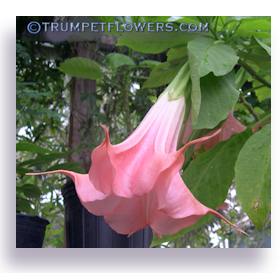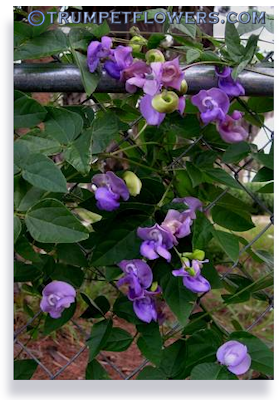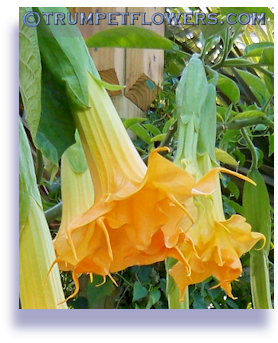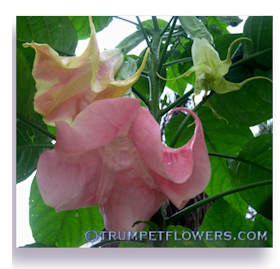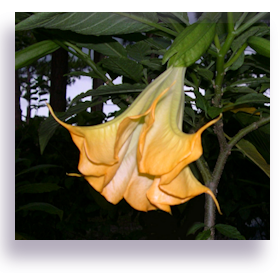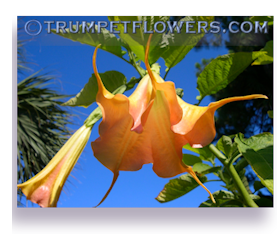Care And Grow
Loquat
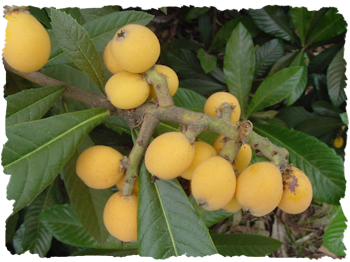 Loquats are an excellent fruit tree choice for zone 9 gardeners. I have personally grown over 30 of them from seed, and even plan on using about 10 as a nice off∼linear hedge in just a few weeks. If you are looking for an evergreen, hardy and easy to care for tree that also bears yummy fruit, loquat should be on your radar.
Loquats are an excellent fruit tree choice for zone 9 gardeners. I have personally grown over 30 of them from seed, and even plan on using about 10 as a nice off∼linear hedge in just a few weeks. If you are looking for an evergreen, hardy and easy to care for tree that also bears yummy fruit, loquat should be on your radar.
Today there are many choices when purchasing loquats. Named cultivars have often been grafted onto quince rootstocks, and stay smaller than their larger wild cousins, which often reach over 30 feet in height. The fruits on these cultivars are also larger, as the stone (seed) inside the fuzzy yellow fruit of each is usually very large, leaving perhaps an inch or so layer of fruit around it.
Because my husband actually prefers the taste of the wild fruit, I grow them directly from seed. If you want to do this too, try to get the freshest seed possible. I have heard they are picky to get up, but when using fresh seed, I have never had them fail to pop up within 3 weeks of planting. The ones I've pictured were very fresh, so no need to scratch seed surface, it had not developed. Wrap in damp paper towels and seal in a baggies, keep in dark place. Every day or so, check on them and change the paper towel. These loquat seeds began sprouting roots in about 2 weeks.
If your seed has been ordered, or is not fresh, give them 6 weeks before disdain sets in. Keep them moist, but not wet, so the seed does not rot below soil surface.
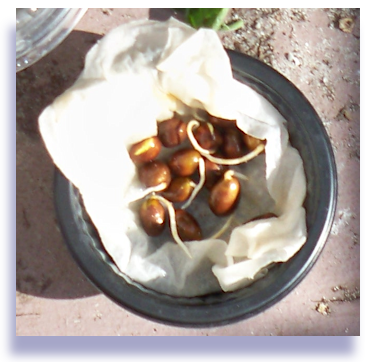 For seed planting, use a sandy but loamy soil with well rotted compost and about 15 percent perlite. Also add appropriate amount of Osmocote beads to the soil mixture. You can use rough sandpaper to sand the seed coat beforehand, until you just begin to see white on one part of middle edge of seed. This will help it germinate faster. Do this in just one small spot on the seed. Place one seed each in 1/2 gallon seperate pots, and cover with soil about 1/2 inch over the seed. Keep moist and place in a sunny spot. Down here in south Florida, I plant out seed right after the fruits ripen on surrounding trees. Picked, eaten and seeds cleaned, into the pots they go.
For seed planting, use a sandy but loamy soil with well rotted compost and about 15 percent perlite. Also add appropriate amount of Osmocote beads to the soil mixture. You can use rough sandpaper to sand the seed coat beforehand, until you just begin to see white on one part of middle edge of seed. This will help it germinate faster. Do this in just one small spot on the seed. Place one seed each in 1/2 gallon seperate pots, and cover with soil about 1/2 inch over the seed. Keep moist and place in a sunny spot. Down here in south Florida, I plant out seed right after the fruits ripen on surrounding trees. Picked, eaten and seeds cleaned, into the pots they go.
After you get them up, now the tricky part starts. Keeping them alive. Loquat seedlings are choosy at first. Don't over water or over fertilize them. Don't disturb their newly forming surface roots. I wait until the plants are about 10 inches tall before giving them a weak fertilizer. Also allow the soil to dry out slightly between waterings, about every other day is a good watering routine.
If you have the knack for it, your little seedlings will grow fairly quickly and within 6 months they will be ready for a gallon container. Check for root growth about once a month after the first 3 months by turning over the pots and peeking for small roots beginning to appear from the holes in the pot bottoms. If you see them, it is time to repot them.
Another thing I love about Japanese plums is the root systems. They grow very similar to palms, and spread extensively over the surface area of the soil they are in, before going downwards. This means no taproot to contend with for at least a year. This give you plenty of time to get it to a decent size, or it can be left in a patio container.
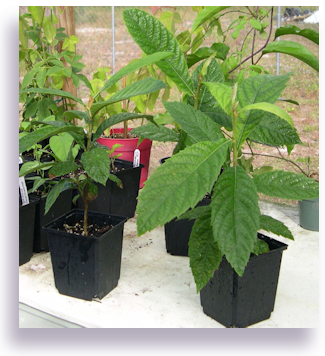 I wait until mine are around 2 to 3 foot tall before putting them out in the actual landscape. This way they can be seen when mowing the lawn, and are also large enough to withstand the elements.
I wait until mine are around 2 to 3 foot tall before putting them out in the actual landscape. This way they can be seen when mowing the lawn, and are also large enough to withstand the elements.
Fall is a great time to plant out eriobotrya. This plant loves full sun, does well in a sandy mixed soil like we have here in Florida, and you won't be spending a lot of time watering them, they are fairly drought resistant once established.
I dig the hole at least 3 times larger and deeper than the pot I have it in. Because we have a hardpan at about 2 1/2 foot down, I make sure to break through this with my shovel. This way the new roots won't run into this and have to fight to hit our water table, which is only about 4 to 5 feet down where I live. Use half of the sandy soil you dug out and mix it with a loamy compost and peat mix. Backfill the hole with this, including the bottom until you know the plant will be level again with the soil surface. Plant the loquats about 20 to 30 foot apart if you plan on letting them reach full size. If you plan on trimming them, you can plant them closer together. For my hedge, I am planning on placing them about 6 feet apart.
Give them a shrub/tree micronutrient and fertilizer spike each when planted. Water every other day until they take hold, usually a few months. Do not over water them.
Pests of Japanese plum are few, but I do notice that the ants like to tend to aphids on occassion. Check for these when watering. You will find them in the newest, most tender leaf growth. Look on the undersides and the top growing new leaves. Spray the heck out of them with the watering hose, cupping the leaves with your hands and blasting the aphids into space.
Loquats can be used as a hedge because of a particular growth habit they posess. If you don't clip off the young lower branches, the small trees will put out and keep a bush shape, in many cases. Training them to tree is easy though, and most people use them as such.
In spring, after they begin to return to growing, pinch back the tips of each growing stem to encourage a tighter shape. Fertilize weakly throughout the growing season, and water sparsley until rainy season comes. Then stop. In November, do not fertilize them at all, until the following spring.
Taxonomic information
- Kingdom: Plantae – Plants
- Subkingdom: Tracheobionta – Vascular plants
- Superdivision: Spermatophyta – Seed plants
- Division: Magnoliophyta – Flowering plants
- Class: Magnoliopsida – Dicotyledons
- Subclass: Rosidae
- Order: Rosales
- Family: Rosaceae – Rose family
- Genus: Eriobotrya Lindl. – loquat
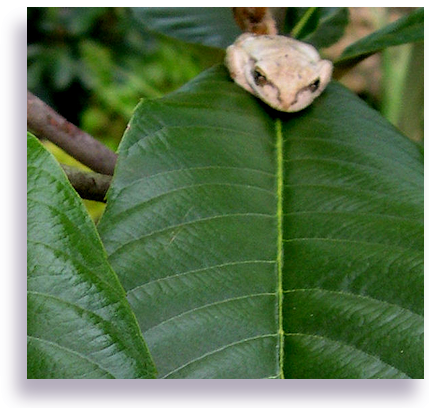 My loquats usually bear fruit at 5 to 8 years of age (from seedling grown) and heights of about 8 feet tall. Loquats bear fruit on large panicles in early spring, and the fruit takes anywhere from 2 to 3 months to ripen. Depending on the cultivar you have, the fruits can be yellow to orange when ripe. It has a tart to faintly sweet taste, and reminds one slightly of apricot or peach, with a more tropical flare. Taste a few before harvesting. If they are ready, cut the entire panicle off of the tree and pull the fruit from it. Loquat keeps well in the salad bins of your fridge, for many weeks.
My loquats usually bear fruit at 5 to 8 years of age (from seedling grown) and heights of about 8 feet tall. Loquats bear fruit on large panicles in early spring, and the fruit takes anywhere from 2 to 3 months to ripen. Depending on the cultivar you have, the fruits can be yellow to orange when ripe. It has a tart to faintly sweet taste, and reminds one slightly of apricot or peach, with a more tropical flare. Taste a few before harvesting. If they are ready, cut the entire panicle off of the tree and pull the fruit from it. Loquat keeps well in the salad bins of your fridge, for many weeks.
This year mine started growing the flower bearing stems in August, and by early September they had the actual flowers on them. A rainy climate after they make flowers seems to weaken them, and I lost a lot of blooms this time. It is better when the flowers appear at the end of rainy season, not in the middle of it. This year (2012) we had weird weather, and I hope next year I end up with more fruit. The fruits were ripe in early March 2013.
Drawbacks would be rotting fruit. If you don't have squirrels in your area, or you are not picking the fruit yourself, it will eventually fall from the tree and litter the surrounding ground, drawing in insects. Either be ready to use the fruit, or hope you have squirrels to do it for you. Otherwise, the tree has a beautiful shape, makes great canopy/shade, and is evergreen with large, deep green leaves.
They are excellent eaten fresh, juiced or made into smoothies, or into wines, jellies or chutneys. Fruits are great substitutes in recipes calling for peach in meat dishes too. Fresh leaves are used in many countries to make a delicious and healthy loquat tea. Here is a delicious Loquat Upside Down Cake Recipe.
Tags: care and grow japanese plum, care and grow loquat, loquats, growing eriobotrya, loquat seedlings, growing loquat from seed, loquat care, japanese plum,

